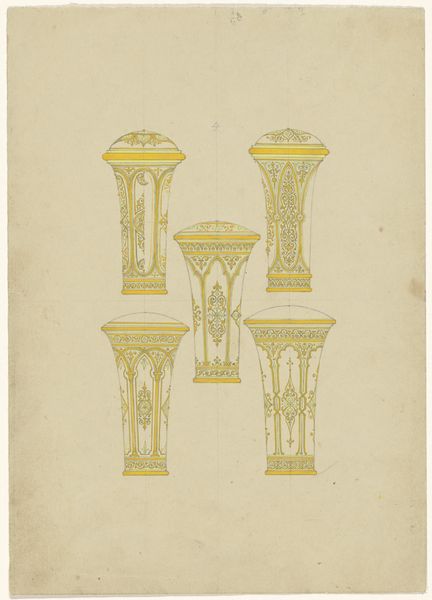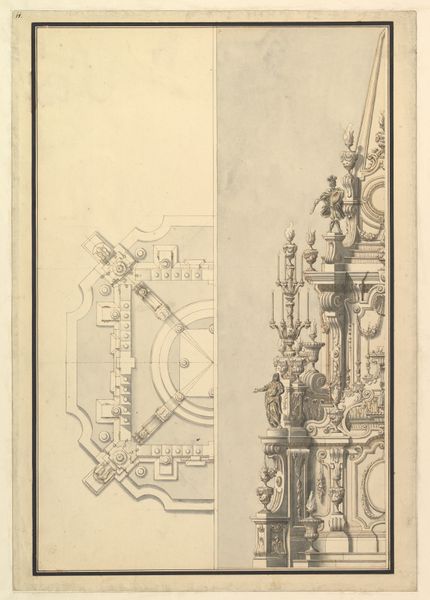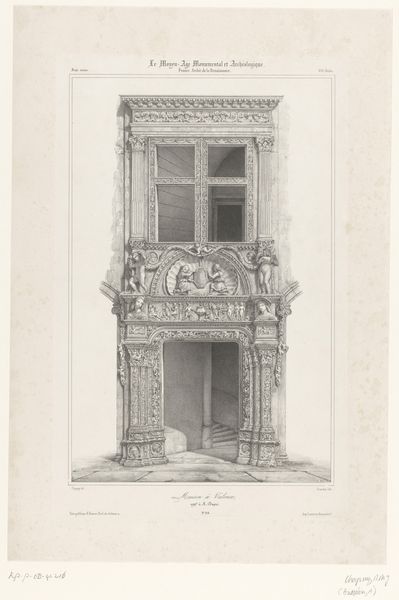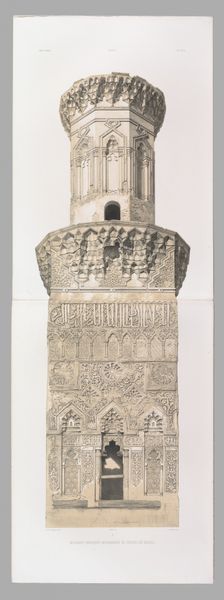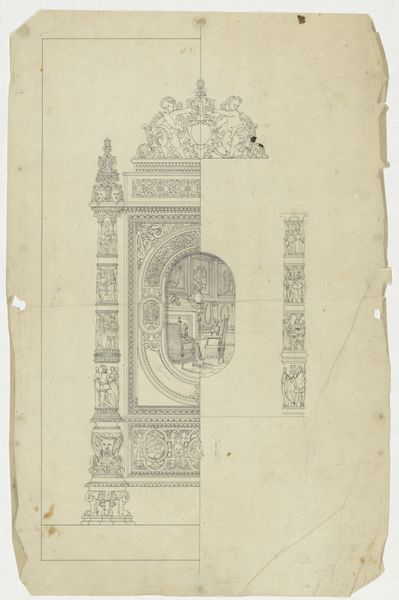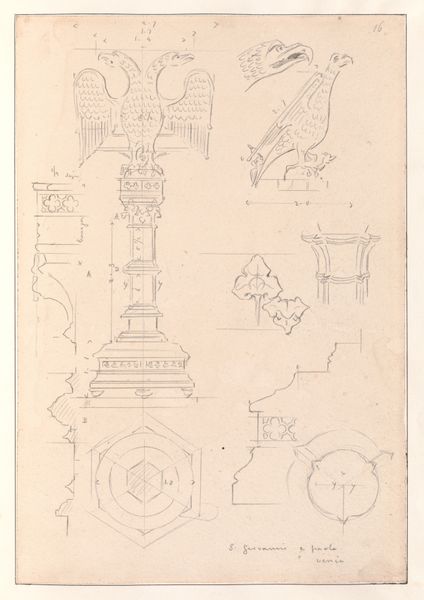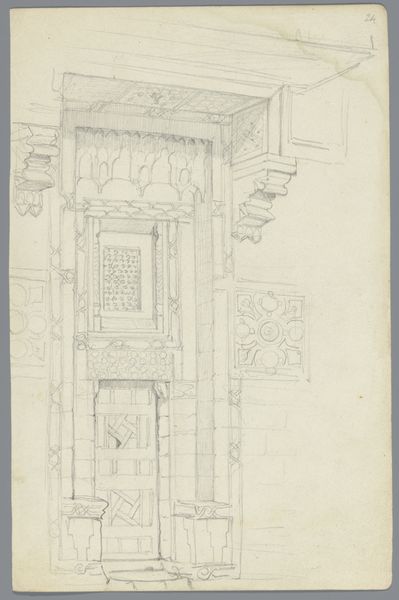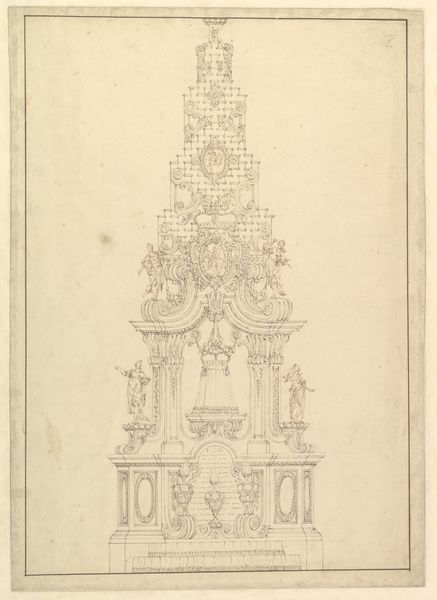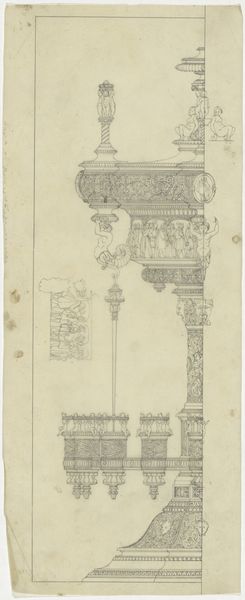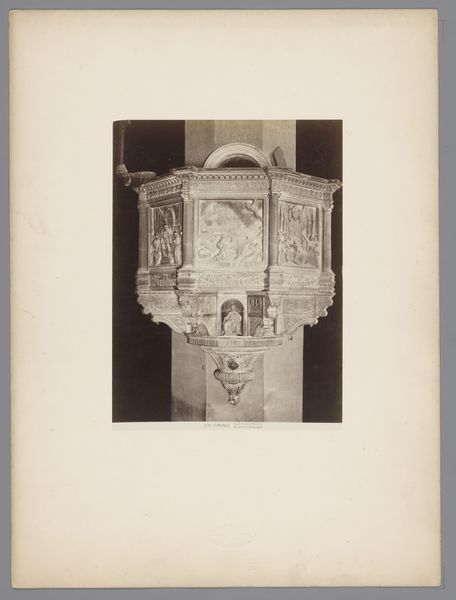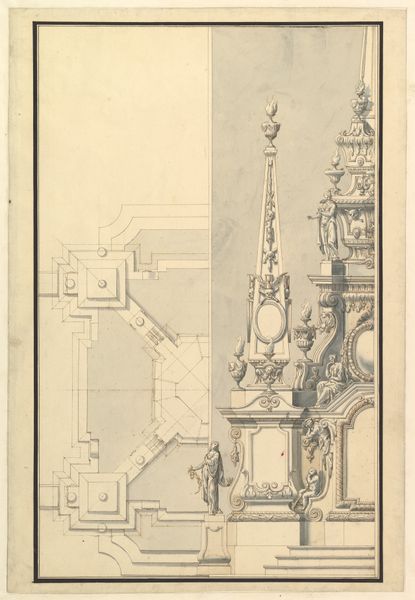
72. Minaret, Mosquée Kaïtbay, au Kaire 1843
0:00
0:00
drawing, print, architecture
#
drawing
# print
#
coloured pencil
#
islamic-art
#
architecture
Dimensions: Sheet: 22 3/8 × 15 5/8 in. (56.9 × 39.7 cm)
Copyright: Public Domain
Curator: This delicate rendering shows a minaret from the Mosque of Qaitbay in Cairo. Joseph-Philibert Girault de Prangey created it around 1843, likely as part of his extensive documentation of architecture in the Middle East. It’s crafted with coloured pencil, a medium that lends itself beautifully to capturing the intricate detail. Editor: Immediately, I'm struck by the artist's patient precision. Look at how he meticulously details the patterns! The composition emphasizes the verticality, which is further heightened by the subdued tones, it gives a distinct sense of soaring lightness. Curator: Yes, that verticality is no accident. Minarets function as a visual and auditory beacon, proclaiming the presence of Islam and issuing the call to prayer. In the 19th century, there was intense French and British interests, so depictions like these often helped shape European perceptions of Islamic architecture. Editor: What stands out to me is how the geometrical ornamentation interacts with the light. The play of shadow gives volume to otherwise linear details, accentuating the architectural form. Do you see the careful arrangement of repeating patterns – stars, rosettes…it’s dizzying, yet harmoniously balanced. Curator: Precisely. Consider also, the choice to depict isolated sections on either side of the minaret. He invites us to deconstruct the monument. How fascinating that Europeans documented Eastern architecture at a time of vast colonial and political change. Editor: In terms of the image itself, the symmetry throughout the composition provides a comforting structure. Yet, those ornate carvings introduce a subtle visual chaos that keeps drawing you back in to trace every groove. This creates a unique tension between order and ornamentation. Curator: Exactly. I think by offering both a portrait of the structure and an almost scientific inventory of design elements, this print served a distinct purpose: documenting architectural forms and also serving the cultural and artistic imagination of 19th-century Europe. Editor: What a truly evocative rendering! This dialogue has deepened my understanding of the intricate dance between geometric designs, symbolic power, and colonial-era observations within architectural studies.
Comments
No comments
Be the first to comment and join the conversation on the ultimate creative platform.

